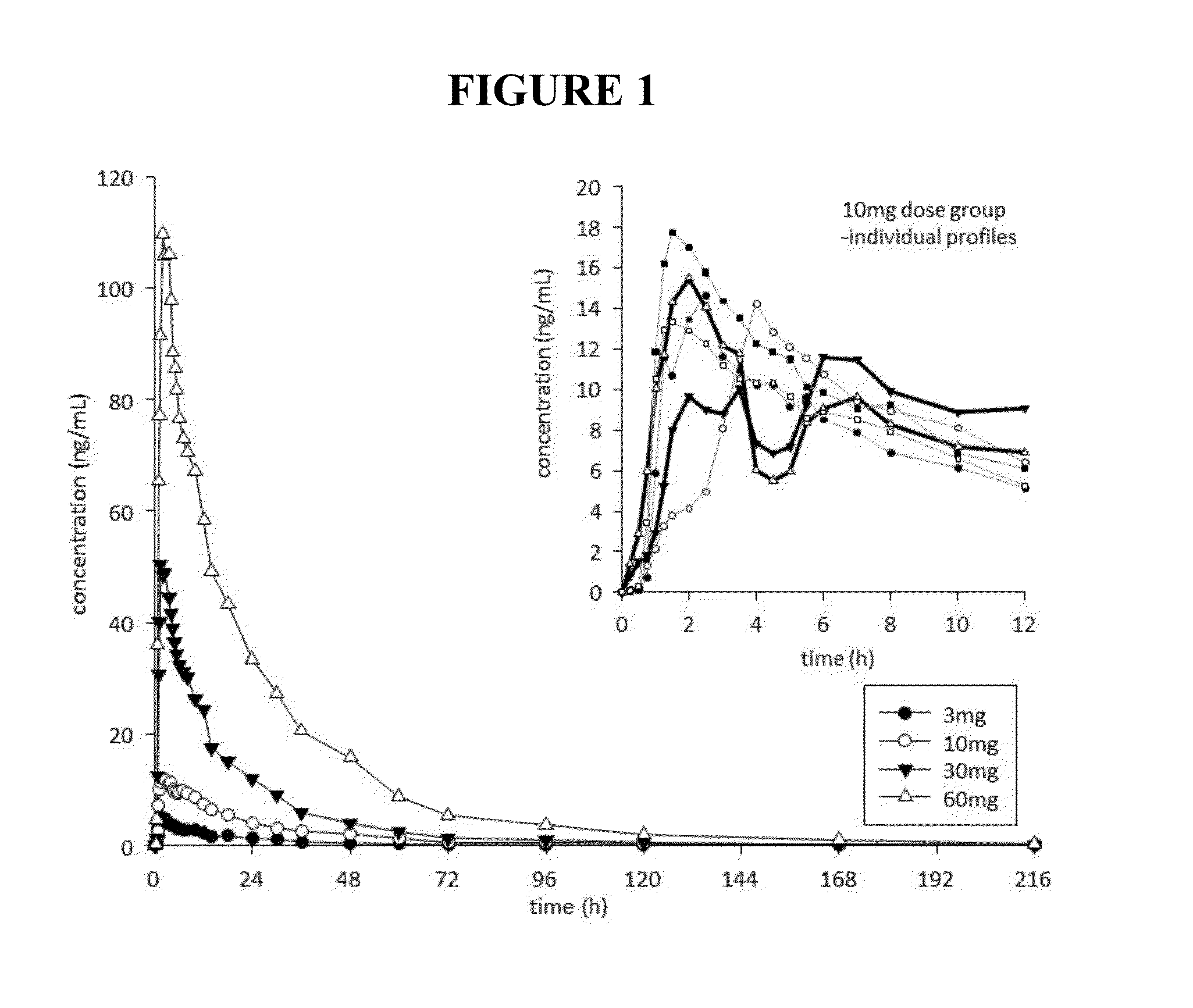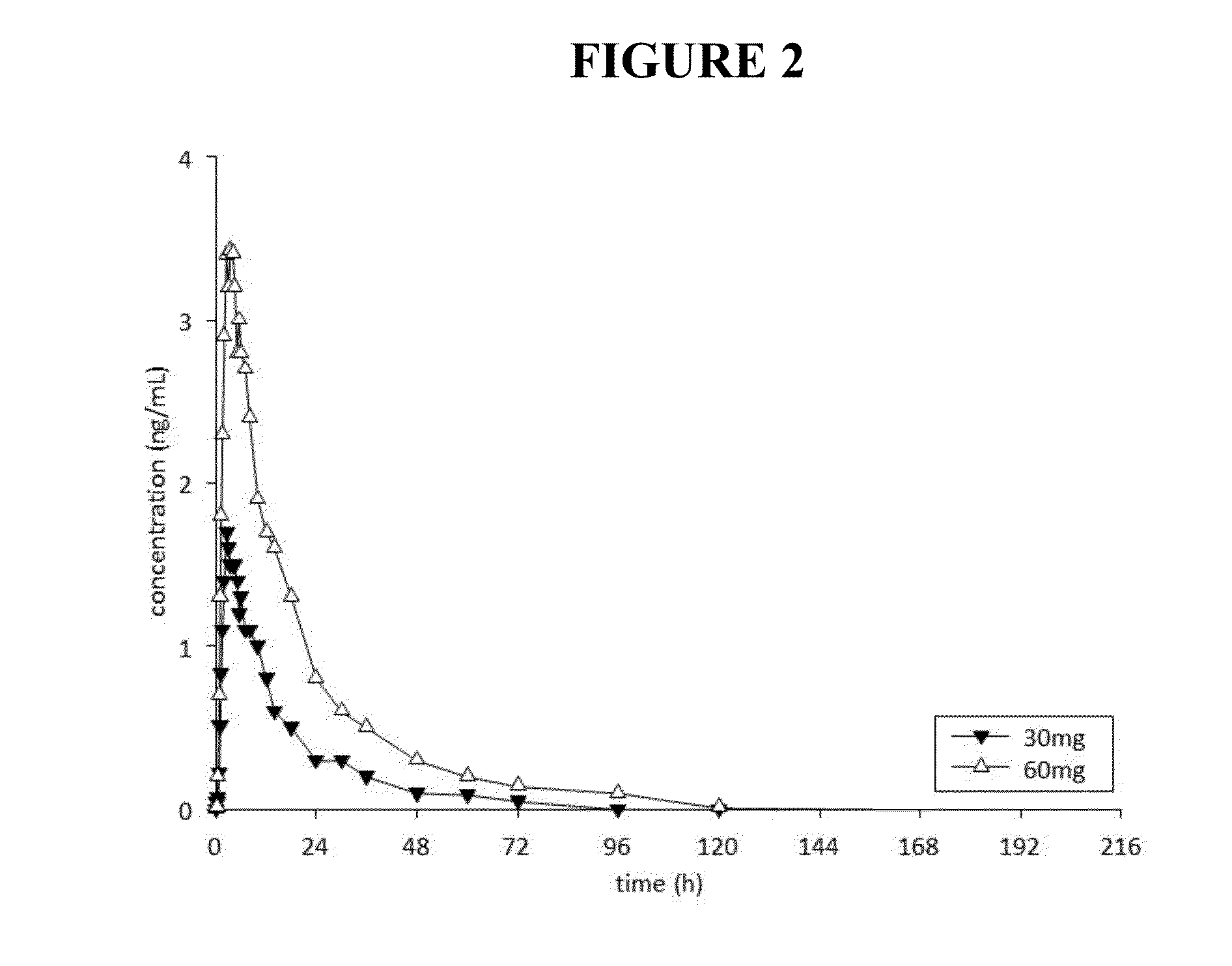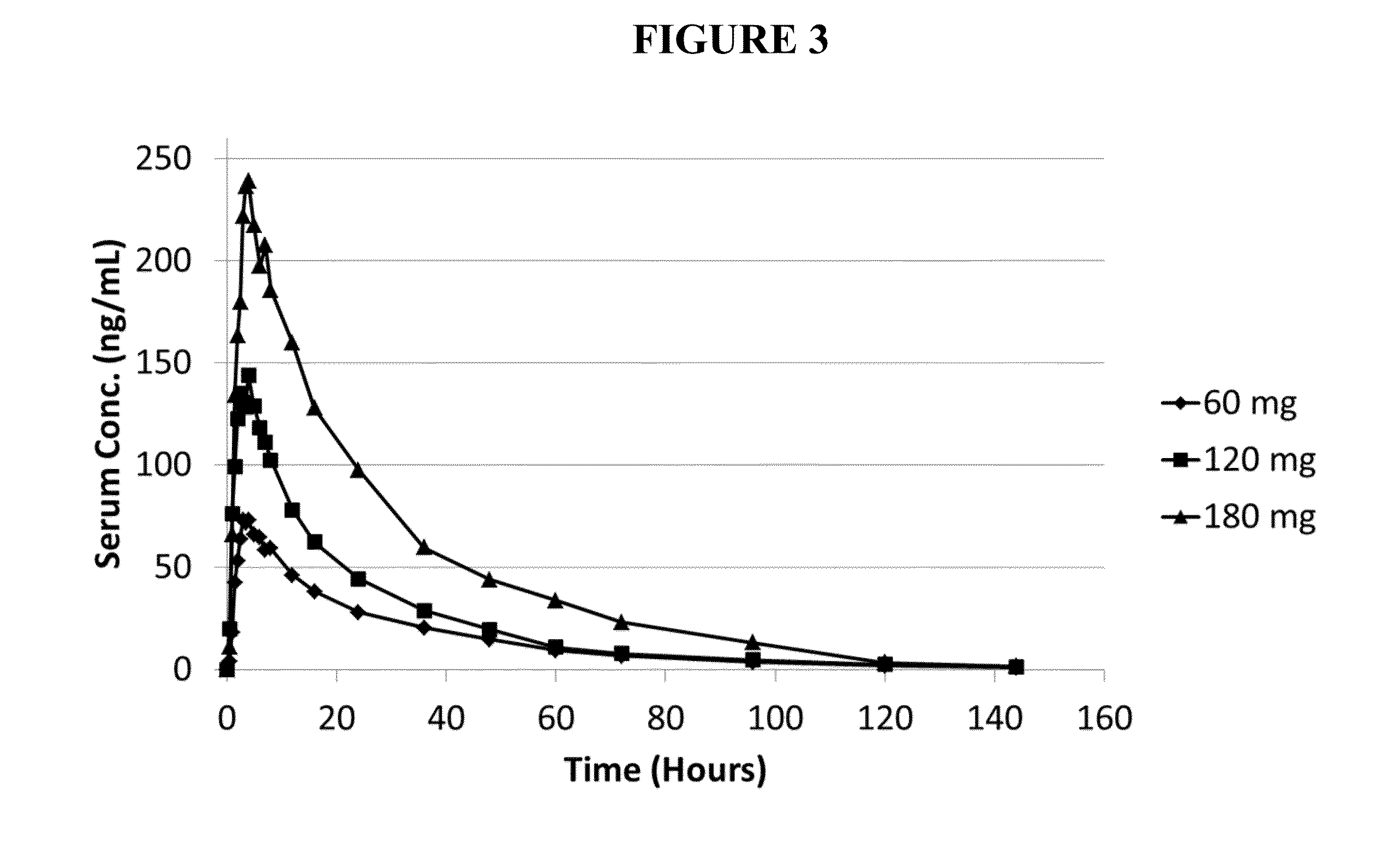Methods for acute and long-term treatment of substance abuse
a long-term treatment and substance abuse technology, applied in the field of acute and long-term treatment of substance abuse, can solve the problems of insufficient noribogaine dose, complex human use, and insufficient previously disclosed broad range, so as to prevent relapse and prevent relaps
- Summary
- Abstract
- Description
- Claims
- Application Information
AI Technical Summary
Benefits of technology
Problems solved by technology
Method used
Image
Examples
example 1
Pharmacokinetics and Pharmacodynamics of Noribogaine in Humans
[0310]Thirty-six healthy, drug-free male volunteers, aged between 18-55 years, were enrolled in and completed the study. This was an ascending single-dose, placebo-controlled, randomized double blind, parallel group study. Mean (SD) age was 22.0 (3.3) years, mean (SD) height was 1.82 (0.08) m, and mean (SD) weight was 78.0 (9.2) kg. Twenty-six subjects were Caucasian, 3 were Asian, 1 Maori, 1 Pacific Islander, and 5 Other. The protocol for this study was approved by the Lower South Regional Ethics Committee (LRS / 12 / 06 / 015), and the study was registered with the Australian New Zealand Clinical Trial Registry (ACTRN12612000821897). All subjects provided signed informed consent prior to enrolment, and were assessed as suitable to participate based on review of medical history, physical examination, safety laboratory tests, vital signs and ECG.
[0311]Within each dose level, 6 participants were randomized to receive noribogaine...
example 2
Safety and Tolerability of Noribogaine in Healthy Humans
[0330]Safety and tolerability of noribogaine were tested in the group of volunteers from Example 1. Cold pressor testing was conducted in 1° C. water according to the method of Mitchell et al. (J Pain 5:233-237, 2004) pre-dose, 6, 24, 48, 72 and 216 hours post-dosing. Safety evaluations included clinical monitoring, recording of adverse events (AEs), safety laboratory tests, vital signs, ECG telemetry from −2 h to 6 h after dosing, and 12-lead electrocardiograms (ECGs) up to 216 hours post-dosing.
Results
[0331]A total of thirteen adverse events were reported by seven participants (Table 2). Six adverse events were reported by three participants in the placebo group, five adverse events were reported by two subjects in the 3 mg dose group, and one adverse event was reported by single subjects in the 10 mg and 30 mg dose groups, respectively. The most common adverse events were headache (four reports) and epistaxis (two reports). ...
example 3
Safety, Tolerability, and Efficacy of Noribogaine in Opioid-Addicted Humans
[0332]This example is to illustrate that noribogaine can be administered at a therapeutic dosing while maintaining an acceptable QT interval. While the therapy employed is directed to opioid-dependent participants in a randomized, placebo-controlled, double-blind trial, the results show that a therapeutic window can be established for noribogaine.
[0333]The efficacy of noribogaine in humans was evaluated in opioid-dependent participants in a randomized, placebo-controlled, double-blind trial. Patients had been receiving methadone treatment as the opioid substitution therapy, but were transferred to morphine treatment prior to noribogaine administration. This was done to avoid negative noribogaine-methadone interactions that are not observed between noribogaine and morphine. See U.S. application Ser. No. 14 / 214,157, filed Mar. 14, 2014 and Ser. No. 14 / 346,655, filed Mar. 21, 2014, which are incorporated herein ...
PUM
| Property | Measurement | Unit |
|---|---|---|
| Fraction | aaaaa | aaaaa |
| Time | aaaaa | aaaaa |
| Time | aaaaa | aaaaa |
Abstract
Description
Claims
Application Information
 Login to View More
Login to View More - R&D
- Intellectual Property
- Life Sciences
- Materials
- Tech Scout
- Unparalleled Data Quality
- Higher Quality Content
- 60% Fewer Hallucinations
Browse by: Latest US Patents, China's latest patents, Technical Efficacy Thesaurus, Application Domain, Technology Topic, Popular Technical Reports.
© 2025 PatSnap. All rights reserved.Legal|Privacy policy|Modern Slavery Act Transparency Statement|Sitemap|About US| Contact US: help@patsnap.com



